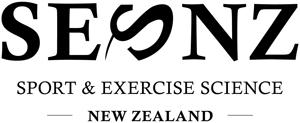2020 SESNZ Annual Conference has been linked to the buy-in from coaches and support for coach training. In 2018 New Zealand Rugby introduced a similar U13 warm-up strategy to the Small Blacks coach training programmes. The aim of the current project was to understand the extent to which the programme and tool package influences coaches’ perceptions, behaviours and practices around warm-up strategies for this age group. Methods: A cross-sectional web-based survey design collected 860 responses from registered Small Blacks coaches (U5-U13). The design was adapted from Barengo et al, (2014) and Sadigursky et al., (2017) to the New Zealand Rugby landscape and Small Blacks programme specifically. Proportions of answers were calculated as percentages and open ended questions were categorised (1. Content of tool packages, 2. Coaches beliefs and attitudes). Results: 84% of respondents expressed a belief in the value of warm-ups for youth U13 prior to attending a Small
Blacks course and 60% believed injury prevention was the primary reason for performing warm-ups. 62% agreed that the Small Blacks programme changed the way they perform warm-ups with their team and 60% used all or the majority of the tools provided by NZR, which they found to be easy to use, while fun and engaging for the athletes. Discussion/ Take home message: These findings suggest that coaches of U13 players generally seem positive towards warm-ups and the specific tools offered by New Zealand Rugby. Most coaches have attended the Small Blacks coaching course that provides guidance and tools for warming up. However, it is evident that coaches may not understand the specificity of exercises and their intended injury preventive goal, although this was considered the coaches most important aspect of warming-up. Personal warm-up plans and unaware of the Small Blacks warm-up were justifications for not adopting this resource.
Sport Psychology 36. Influence of perceived opposition ability on exerted effort in junior footballers 1
Foulcher, A; 2Miles, B.
37. Investigating the effect of colour during football penalty kicks: Retrospective analysis of professional football players 1
1
University of Canterbury
Introduction: In studying sport there has been an interest in what influences competitors both positively and negatively. Opposition ability has been shown to influence physical measures, yet opposition ability has only been measured objectively, and not based on an individual’s perception. The purpose of this study was to investigate whether perception of opposition ability influenced the level of exerted effort in junior footballers. The hypothesis of this study is the higher the perceived opposition ability the higher the average and maximum heart rate will be. Method: A repeated measures design was used to gather data on six junior footballers over six games. Before every game each participant indicated their perception of the oppositions’ ability on a five point Likert scale, average and maximum heart rate were recorded for the first ten minutes of each game using heart rate monitors. Results: Multiple regression and Analysis of Variance testing was conducted, the results showed that perceived opposition ability was a significant predictor of average and maximum heart rate. The results also showed significant differences in average and maximum heart rate across the different perceived opposition ability levels. Discussion/Take home message: These findings were consistent with previous research that used an objective measure of opposition ability. This study shows there is a relationship between perceived opposition and heart rate, to what extent or what is causing this relationship remains unclear. Future research should focus collect data on a wider range of variables, like an objective measure of opposition ability, possession percentage and time spent in opposition half, as well as perceived opposition ability to determine what variable or combination of variables create the best model for predicting of average and maximum heart rate.
JSES | https://doi.org/10.36905/jses.2020.03.01
Park, S. H.; 2Uiga, L.; Masters, R. S. W.
3,4
Lam, W. K.; 5Chan, D. C. L.;
1 1
Te Huataki Waiora School of Health, University of Waikato, New Zealand 2 Department of Sport and Exercise Science, Manchester Metropolitan University, Manchester, England, United Kingdom 3 Department of Kinesiology, Shenyang Sport University, Shenyang, China 4 Li Ning Sports Science Research Center, Li-Ning (China) Sports Goods Co. Ltd, Beijing, China 5 School of Public Health, Li Ka Shing Faculty of Medicine, The University of Hong Kong, Hong Kong Special Administrative Region, China Introduction: The colour red is theorised to be a testosterone-dependent signal of dominance and threat that can undermine the performance of an opponent. However, in previous research we found that a blue, not red, spectator background elicited avoidance motivation among inexperienced penalty-kickers in soccer, but not experienced penalty-kickers. To further investigate this effect of colour, we conducted a retrospective analysis of penalty kicks in professional soccer games between 2005 and 2020. Method: Like our previous study, we examined the effect of red, blue, and other spectator backgrounds on avoidance motivation. Avoidance motivation was indexed by the proportion of kicks towards the larger side of the goal (i.e., avoidance behaviour), since it reflected the tendency to choose the easier option to reduce likelihood of failure. Results: We found that the proportion of kicks towards the larger side of the goal was significantly greater for red and blue colour backgrounds compared to the other colour background (p’s < 0.046). Discussion: Possibly, red and blue elicited avoidance behaviour because they are colours
33





